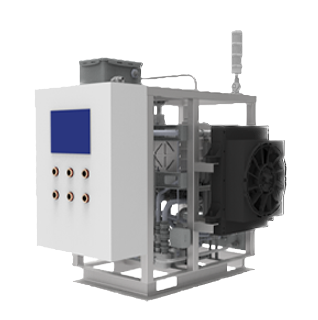Hydrogen as a fuel is delivered to the anode, where is split into protons and electrons by catalyst. Electrons are transported through external circuit to cathode provided electrical current. Protons (H+) go to the other side of cell through electrolyte and then react with oxygen (from the air) inserted by channels to cathode and electrons. As a result, water and the heat are produced.
Technology has advantages over conventional combustion techniques and can also reach higher efficiencies. Fuel cells energy generation efficiency, about 60%, is nearly doubled, compared to combustion-based technology of around 35%. They have also a quiet operating characteristic caused by their stationary design.
60%
of efficiency
